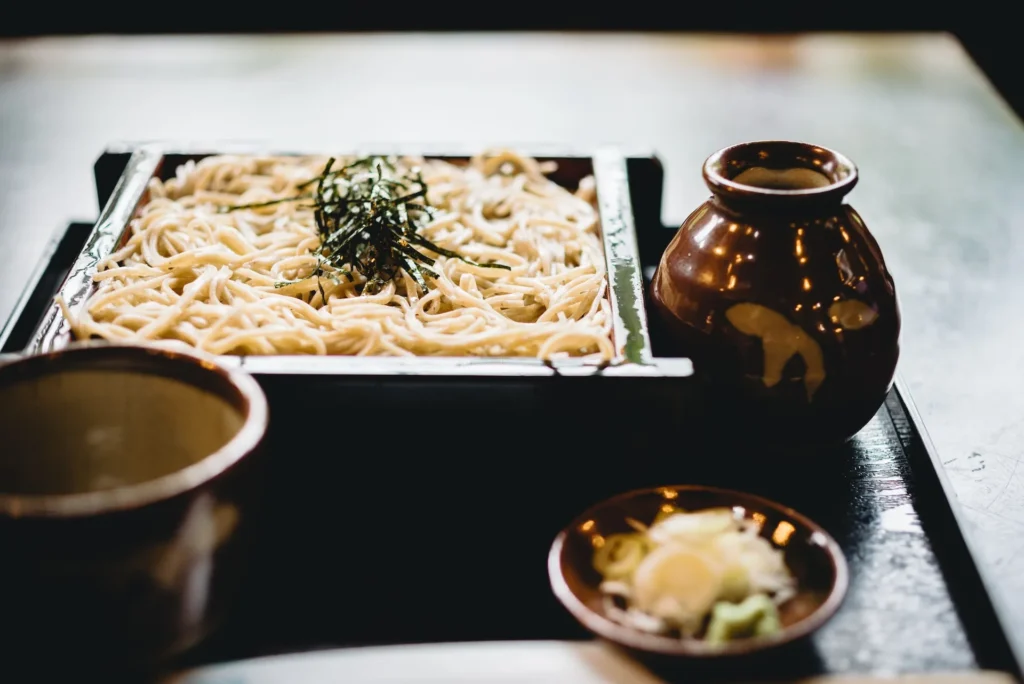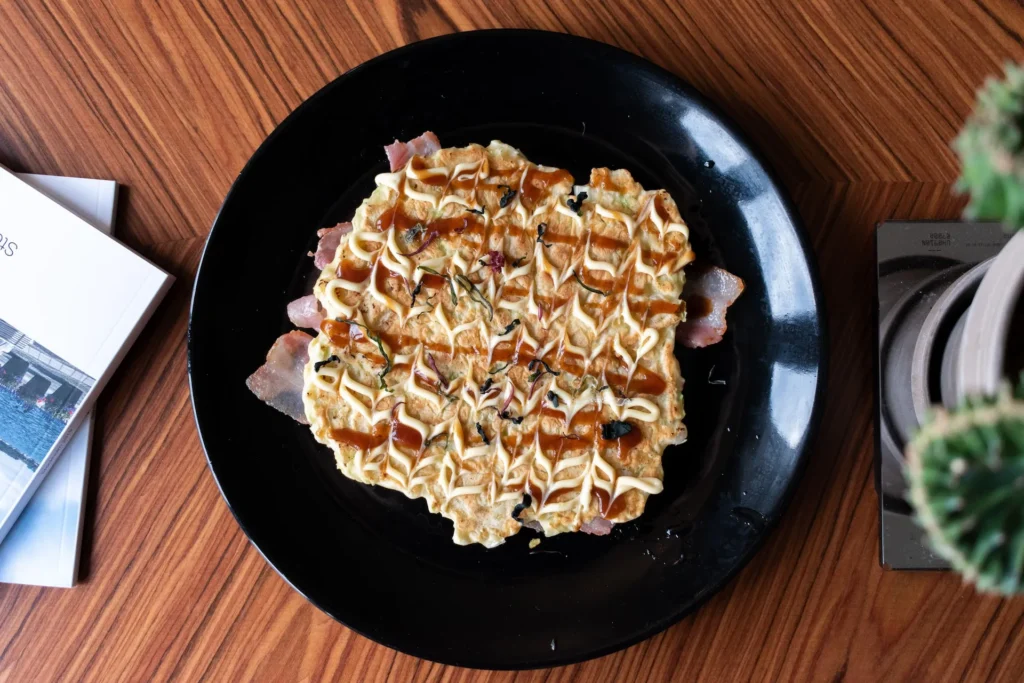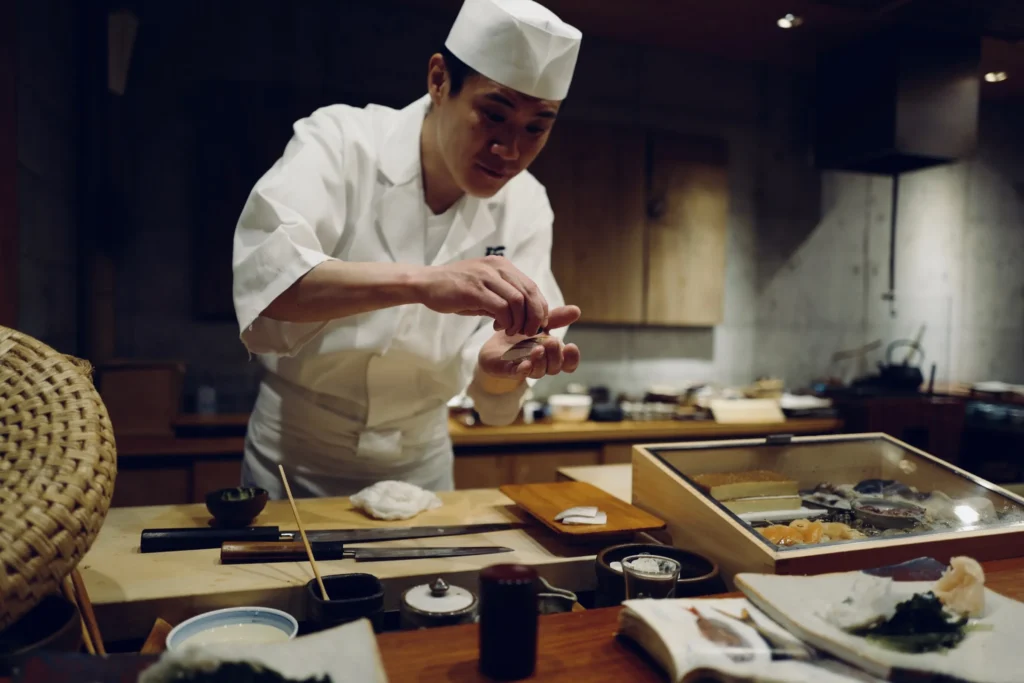
Sushi and Sashimi
The world-famous sushi and sashimi are essential foods to try when visiting Japan. Each bite of these bite-sized pieces of art tells a unique story of the country’s culture and history. The sushi’s delicate balance of rice and fish, accompanied by a touch of wasabi and soy sauce, creates a perfect harmony in your mouth. Sashimi, on the other hand, is fresh, raw fish served without rice. When you eat sushi and sashimi at a Japanese department store basement food market, you’re not just tasting the food but experiencing Japan’s culinary history.
Bento Boxes
Bento boxes are Japan’s version of a packed lunchbox, often containing a combination of rice, vegetables, and meat or fish. These boxes are not only tasty, but also a feast for the eyes. The ingredients are often arranged in a way that showcases the creator’s artistic flair. Each box tells a story of the creator’s personality and style, making every bento box unique. Eating a bento box at a Japanese department store basement food market will give you a glimpse into the daily lives of Japanese people.

Wagashi
Wagashi is a type of traditional Japanese confectionery that has been around for centuries. These treats are often made from rice flour, sweet bean paste, and other natural ingredients. They come in a variety of shapes, sizes, and colors, and are as pleasing to the eyes as they are to the taste buds. Each wagashi has a unique flavor and texture, making it a perfect snack to try at a Japanese department store basement food market.
Yakitori
Yakitori is a type of Japanese skewered chicken that’s grilled over charcoal. It’s a popular street food in Japan and can be found in many restaurants and food markets. The chicken is typically cut into small pieces and skewered before being grilled over high heat. The grilling process gives the chicken a crispy and slightly charred exterior while keeping the meat juicy and tender on the inside.
Yakitori is often seasoned with salt or tare, a sweet and savory sauce made from soy sauce, mirin, and sugar. There are many different types of yakitori, and the most common cuts of chicken used include thigh meat, breast meat, and chicken skin. Some varieties of yakitori also include vegetables such as green onions, mushrooms, and peppers on the skewer. Yakitori is a popular food to enjoy with friends and drinks and is often served in casual dining settings such as izakayas, Japanese-style pubs.

Tempura
Buying tempura from a tempura stand in a Japanese department store basement food market is a unique experience that’s not to be missed. The stands are often set up in the center of the market and are easy to spot thanks to the delicious smells of frying batter and seafood. The stands usually have a small seating area where customers can enjoy their freshly fried tempura.
When ordering from a tempura stand, customers can choose from a variety of seafood and vegetables to be battered and fried. The vendor will take the chosen ingredients and dip them in the batter, which is then quickly fried to order. The freshly fried tempura is served hot and crispy, making for a satisfying snack or light meal. Customers can also choose from a variety of dipping sauces to accompany their tempura, such as soy sauce, tentsuyu, or salt.
Gyoza
If you’re looking for a delicious and convenient snack or meal in a depachika, gyoza is a great option to try. Gyoza are small dumplings filled with ground meat or vegetables, wrapped in a thin dough and pan-fried until crispy on the bottom. They are typically served with a flavorful dipping sauce, and are a popular dish in Japan.
When buying gyoza from a depachika, you’ll likely find them pre-packaged or sold fresh from a food stand. If you opt for the pre-packaged option, be sure to check the cooking instructions on the label. Most gyoza can be cooked by boiling or pan-frying, but be sure to follow the instructions for best results. Alternatively, you can purchase fresh gyoza from a food stand and watch as they are expertly prepared right in front of you.
You may even be able to select your own fillings, such as pork, chicken, or vegetarian options, and watch as the dumplings are expertly folded and pan-fried until golden brown. Once they’re ready, simply grab a pair of chopsticks and dip the gyoza into the accompanying sauce for a burst of savory flavor. Whether as a snack or a full meal, gyoza from a depachika are a delicious and convenient option for any food lover.

Leave a Reply